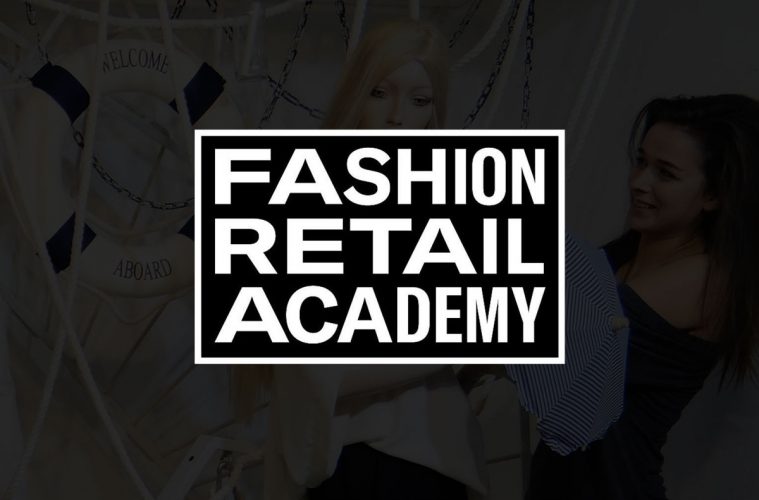If you want a job in fashion but you’re not sure where to start, you’re not alone. To give you some inspiration, we asked two industry leaders about their careers, and for any advice they would give about breaking into fashion.
Carl Thompson is a blogger and Youtuber. He also founded the brands Hawkins & Shepherd and Dion Dreyes. Thom Scherdel is a former student at the Fashion Retail Academy who now works as a buyer at Browns.
How did your interest in fashion start?
Carl Thompson: My love of fashion came from my 9-to-5 job. I was in the office for 12 years, and it gave me a reason to wear formalwear; that was very much my style. I loved tailoring, double-breasted blazers, pin collar shirts… a 1920s feel. Think Great Gatsby, think Boardwalk Empire. That’s where my love of fashion came from.
Them Scherdel: I didn’t know what part of the business I wanted to work in. I knew I had a love for clothes and that I wanted to be in buying and selling something, and the Fashion Retail Academy was this beautiful combination of the two. I moved down to London, wanting to just be here and study fashion, but not knowing what I wanted to do after high school.
When did you decide you wanted to work in fashion?
CT: At some point, I thought: ‘do I want to keep doing IT? Do I want to work this hard, this many hours, for the rest of my life?’ I looked at the future and I decided I wanted a better lifestyle balance than that job gave me. That was the lightbulb moment. I decided to do something for myself, and that’s where the business was born.
TS: Throughout school, I’d always do the bare minimum because I just wasn’t interested. It wasn’t until I got to the Fashion Retail Academy that somebody finally put me in a lane and said, “this is what you want to do, so go for it”. Then I loved what I was doing. I was excelling in the projects and was always thinking: ‘How can I make these things better?’
How did you first break into the industry?
CT: Hawkins & Shepherd came first, and then the blog was born organically to promote my business. There weren’t many guys out there doing it, especially for someone similar to myself, someone who had a sense of style but didn’t want to dress too extravagantly. I started wearing my shirts, styling them with suits and writing about them. It helped my business because I was gaining a following on social media.
TS: I talked to Debbie, one of the tutors at the Fashion Retail Academy, and she pointed me in the direction of buying. She told me it was one of the coolest jobs: you travel the world, select clothes and you run it as your own business. That was very interesting to me.
From there, Debbie told me about some jobs at Selfridges in merchandising. She told me to get my foot in the door and then I could go on to buying once I was in. I did a year-long course when I was 17, and at my interview, they couldn’t believe how much I knew about the fashion industry. They kept saying, “we don’t get grads who come and know this”. And they hired me.
I was at Selfridges when it was the place to be. There was a real movement, and they had some super exciting, high-end brands and designers. It was an amazing time to be there. I was doing streetwear; which was Carhartt, Dickies, and all of these brands only in Selfridges. I was there for 5 years moving from department to department, which they do so you can get experience in everything.
What happened next?
CT: I was blogging for free because I loved it: learning about putting together outfits, styling and everything. When the blog grew, and when Instagram started to grow too, that’s when brands started to come on board. Probably about a year after launching the blog, it wasn’t only to promote Hawkins & Shepherd anymore. It became its own business, and I enjoy that to this day.
TS: Topman headhunted me for a position. They wanted someone who had multi-brand experience as they were starting up their own branded department. I started at Topman and opened the 214 room, which was at the top of the Oxford Circus store. It was me and one other buyer. He said, “if you go and find cool stuff, we’ll buy it”. We were doing anything that was wild! After he left, and I took over the buying role. I was in my early 20s when I was looking after a 50-million-pound department. Which is terrifying when you think about it, but it didn’t feel like it at the time!
What advice would you give to those starting in the industry?
CT: Don’t give up on your dreams. There is a future in the fashion industry in general. Be consistent, be yourself, and think about who you want as your audience. And go for it; it’s that simple. Forget about the self-doubt!
TS: Know what the bare minimum is for what needs to be done, and always give more. Know your objectives and what the company wants, and then think “how can I add something onto that? How can I take that and add something on top to make it better?”
If you want to work in fashion, find out how our courses and degrees at the FRA can help get you there.

